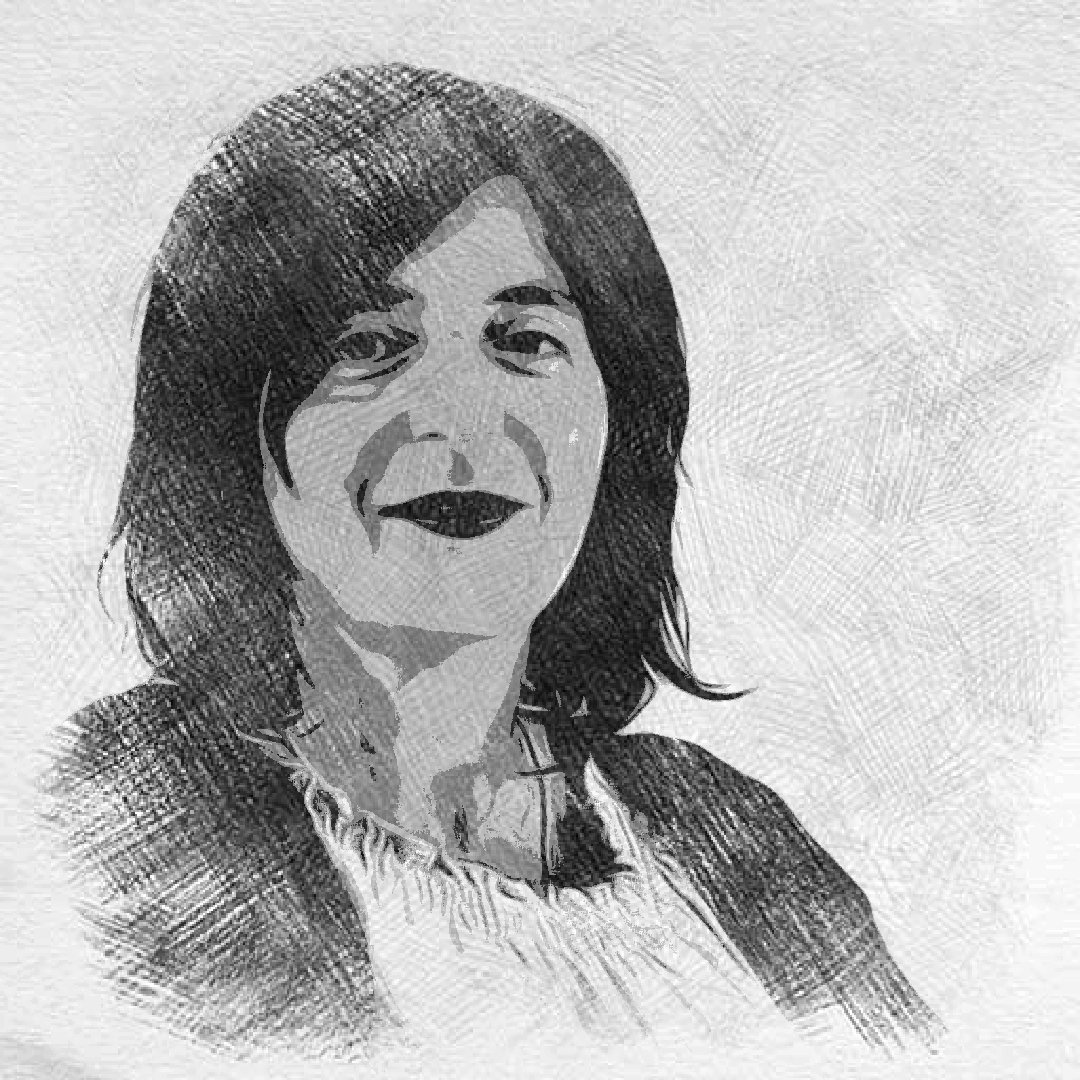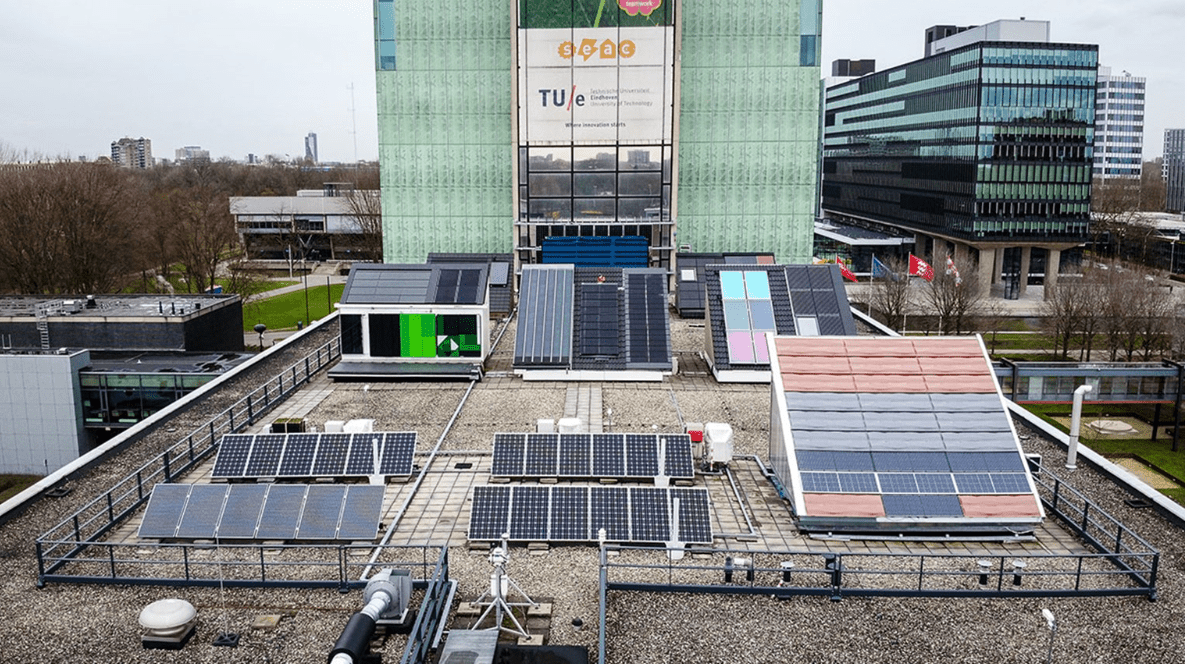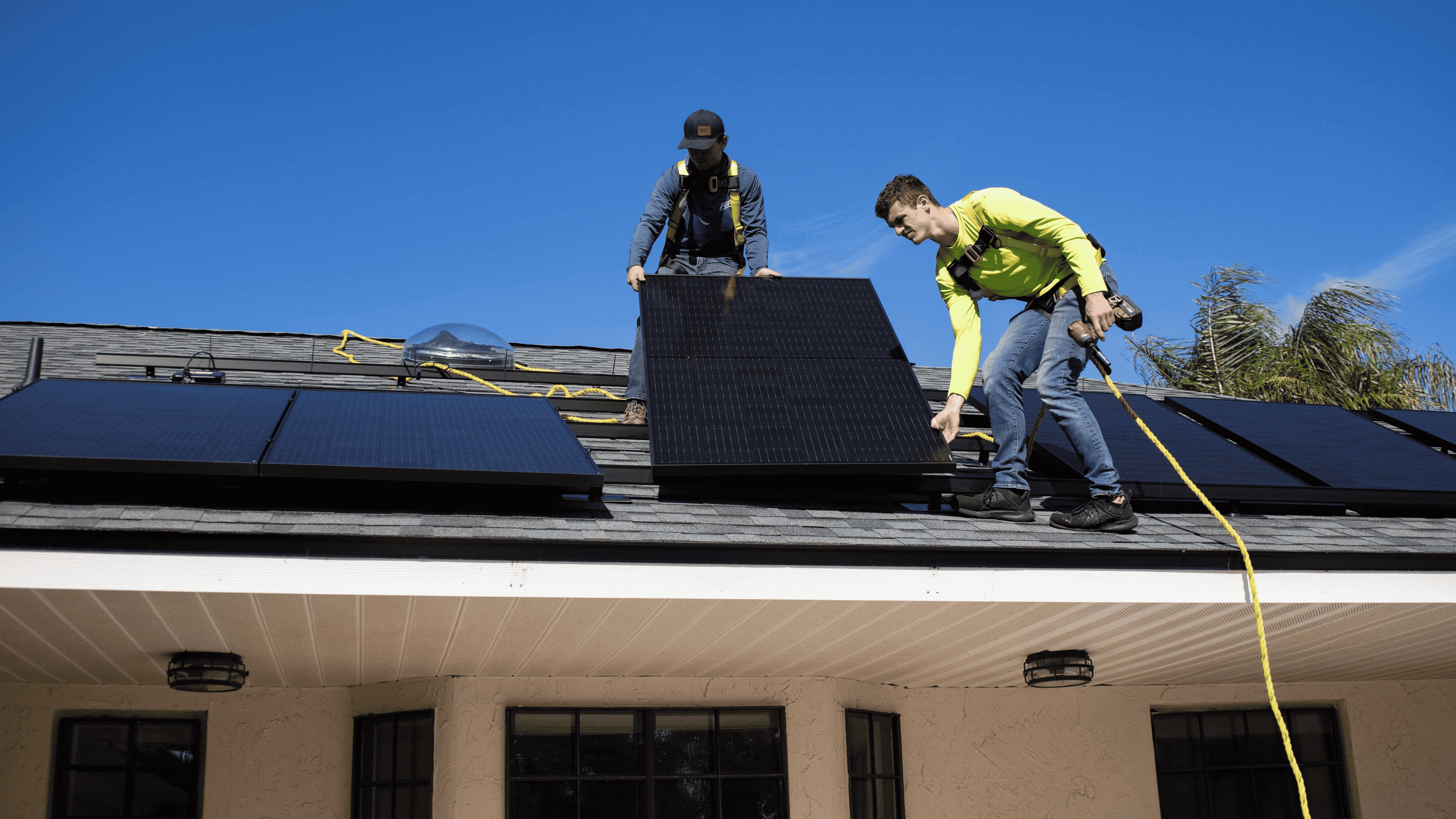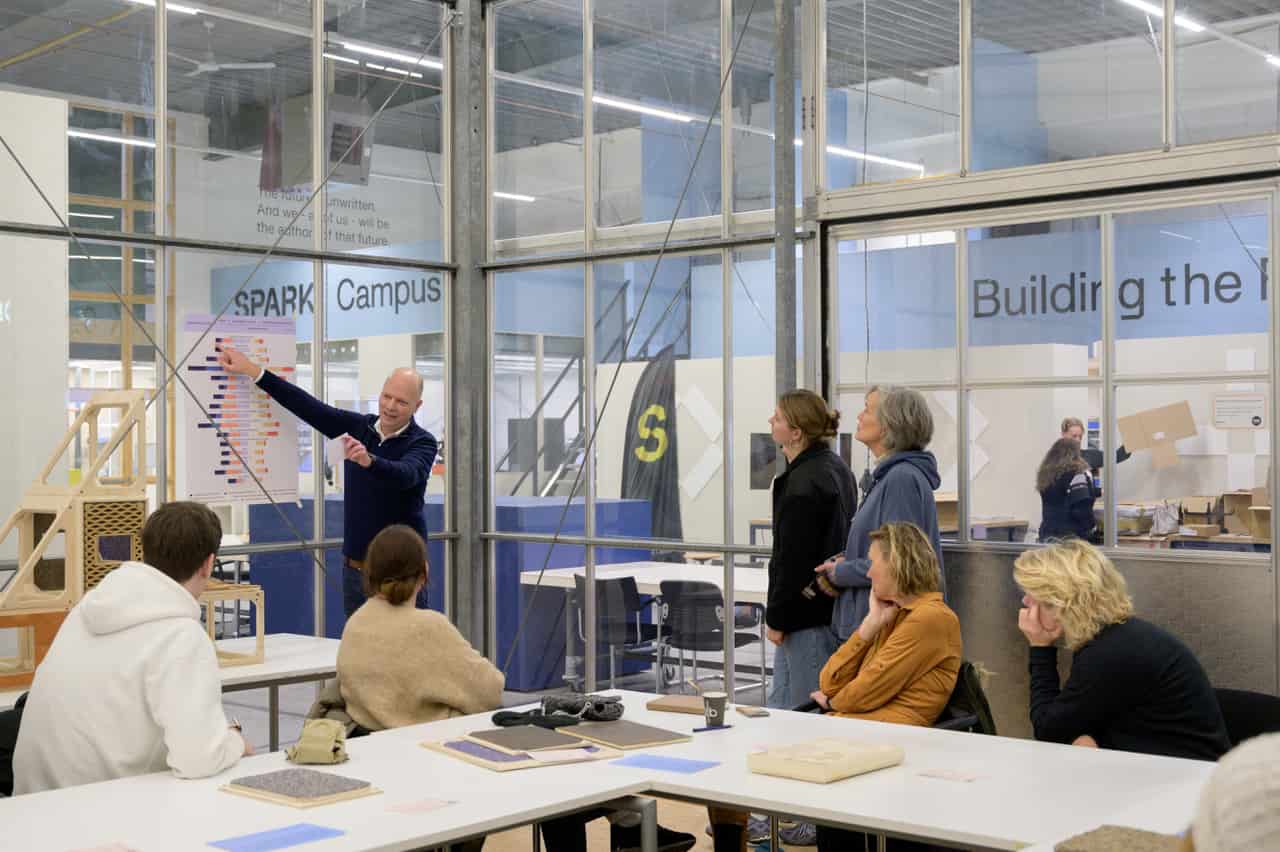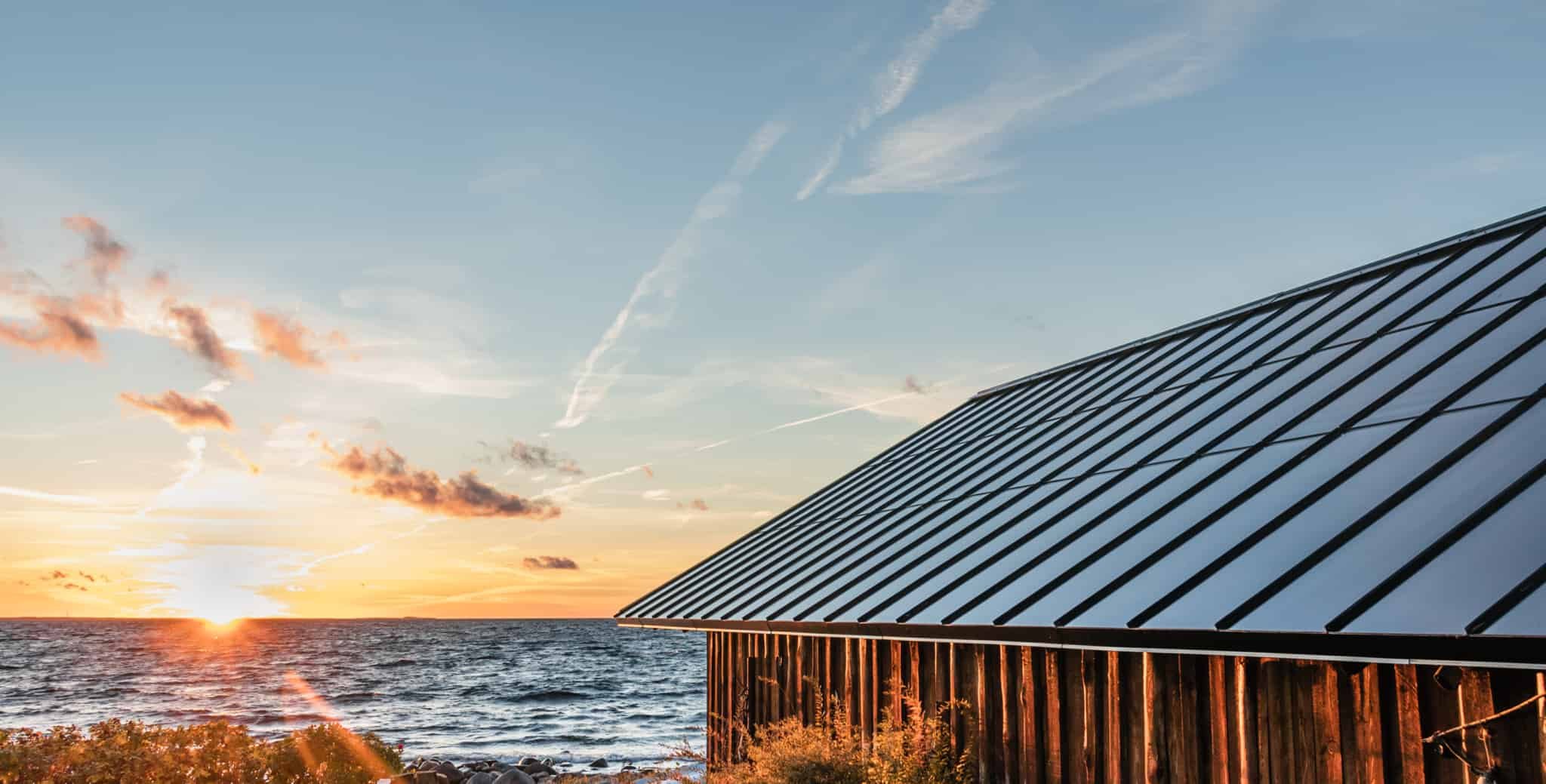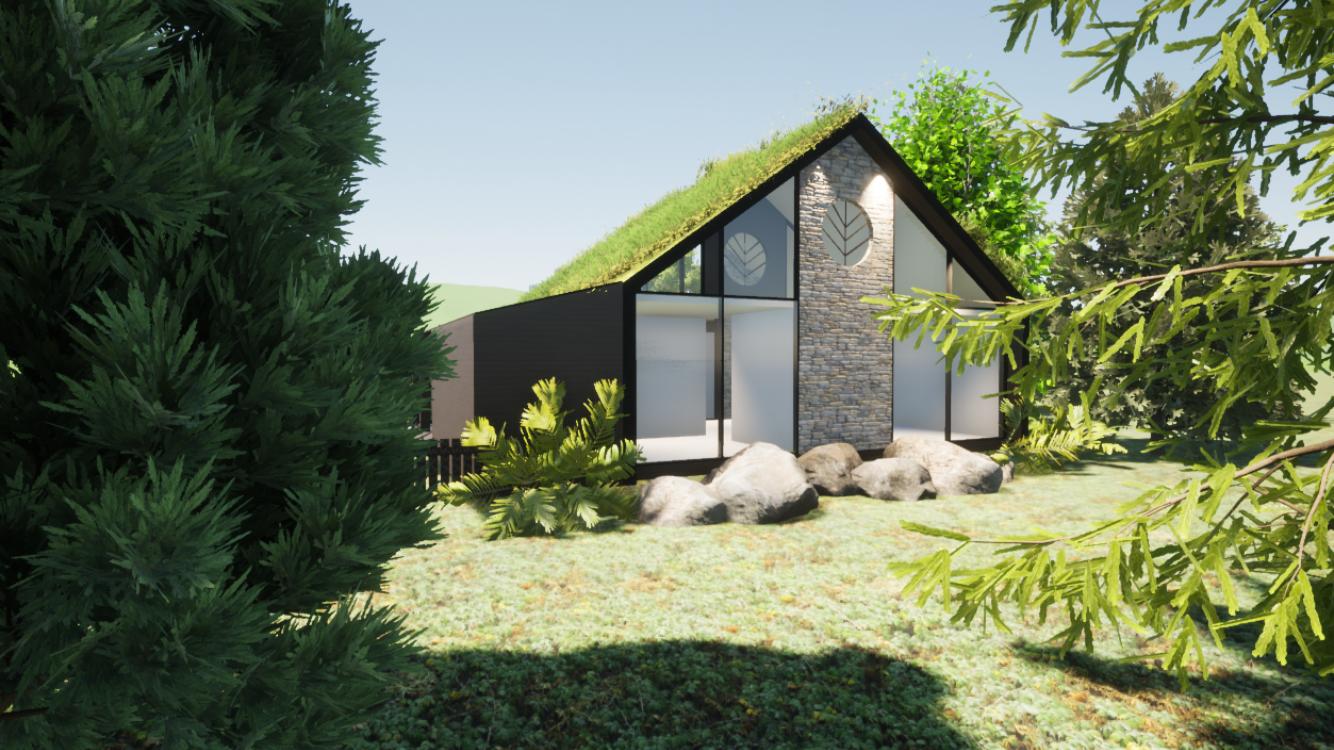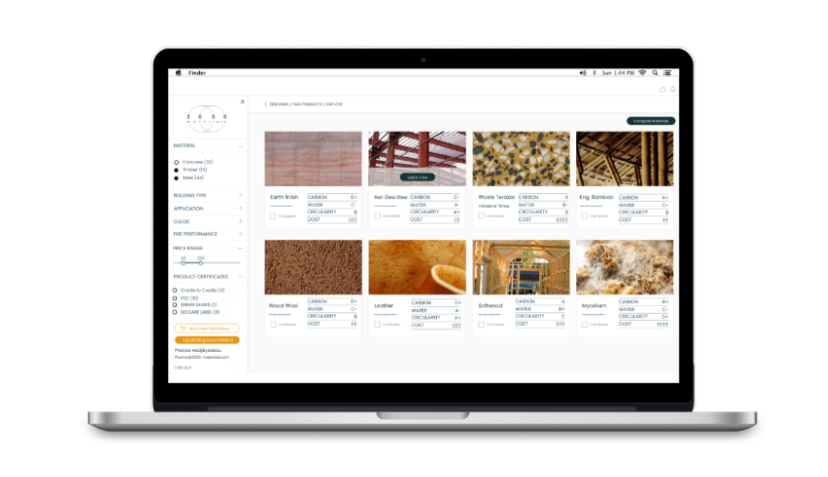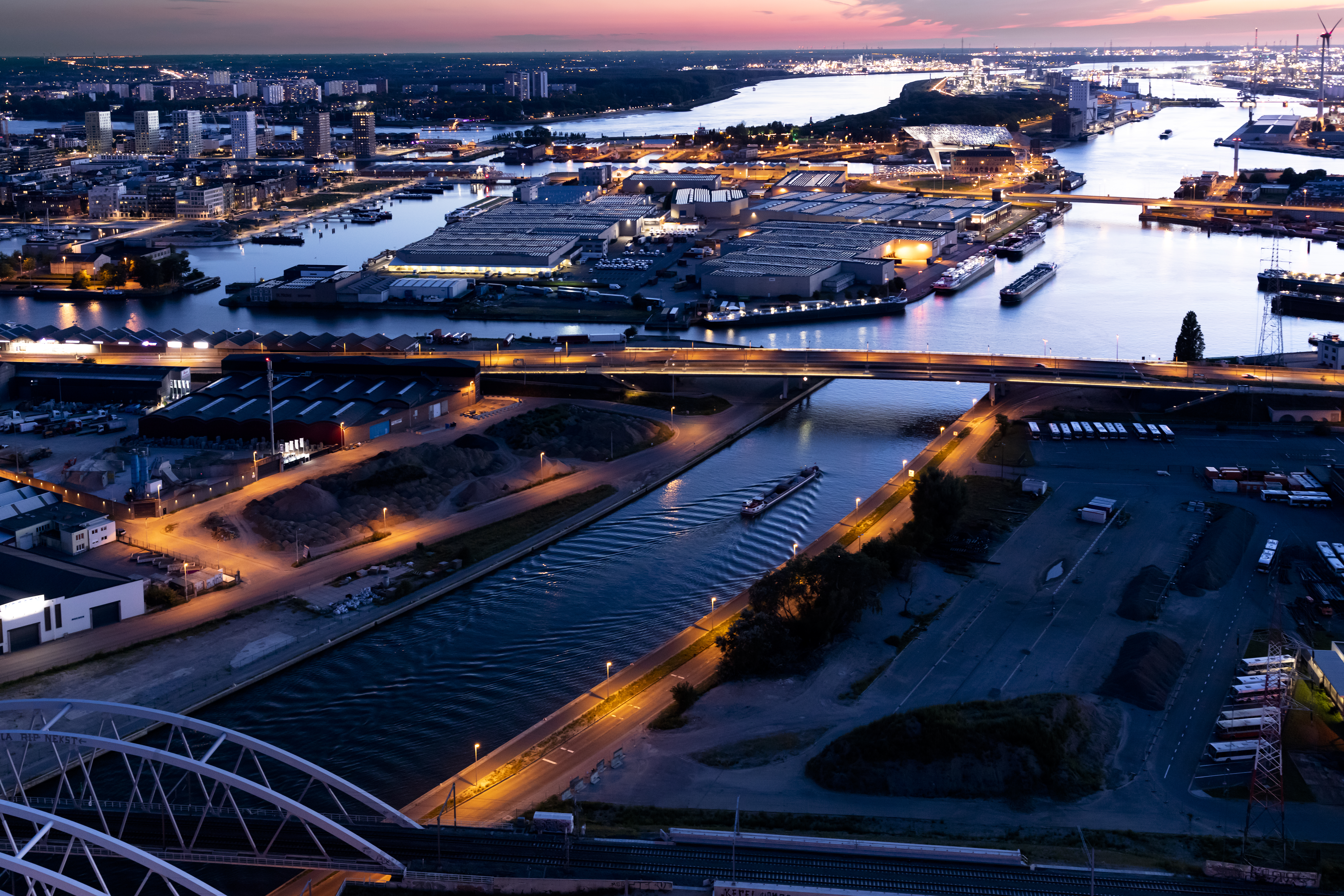Facade panels that allow you to generate energy, made from sustainable materials and which also look attractive. Instead of glass and the usual black and blue solar panels. Studio Solarix designs, develops and realizes these kinds of unique panels with a variety of colors and patterns. They can be used in both new construction and redevelopment projects.
Studio Solarix was founded in 2016 by architect Marloes van Heteren, graduate of TU Delft, and product designer and artist Reinier Bosch, an alumnus of the Design Academy in Eindhoven. Initially, their work for Studio Solarix was a sideline activity to their regular work. It became their full-time work as of 2018 onward. The company is currently in the start-up to scale-up phase, says Van Heteren in her office at the SDG House. Which is the office complex in the monumental building of the Tropeninstituut (KIT Royal Tropical Institute) in Amsterdam. Where Studio Solarix is housed together with dozens of other sustainable companies and NGOs. “Meanwhile, we have completed a few large projects, but we are still in a growth phase.”

How would you describe your product?
“We make aesthetic, sustainable and energy-generating facades for buildings. We do this from the design up to and including the realization of a project. The aim is for buildings to generate energy through their architectural skin. We want to show that this can be attractive as well as generate sustainable energy. We look at the technical side at the same time. If the solar panels are lying in the shade, this usually has an effect on their yield. What we want with our facade panels is more freedom in terms of design. This is feasible because our panels are equipped with their own optimizers. This offers space for unique dimensions and positioning in comparison to panels that are linked together within one system.
There is a lot of glass in office building facades. Solar panels also usually contain a sheet of glass. Thanks to its reflective properties, glass not only provides more heating but it tends to have a harsh appearance too. Therefore, we prefer a combination with soft materials. One where we integrate the solar cells into a substrate that is made from a durable material. For example, we work with bio-composite with thin film panels. We also use LED lighting so as to provide more atmosphere and interaction with the surrounding environment.”
Do you see of any of this in the buildings?
“We have already completed two projects and are also preparing and building on follow-up projects. You can see that interesting and sustainable facades are being created that are beautiful and which produce energy. A combination of beauty and brains.
Along with the energy-generating panels, for the Kuijpers building in Helmond we have integrated LED lighting in the shell that changes with the seasons. You can see snowflakes light up on the facade during winter and flowers in the spring. But you can also use software to make sure that the building turns completely green on Sustainability Day.
In another project we made a design where the light follows you as you walk up the stairs. You’re really able to interact with your surroundings thanks to these types of added features. For companies in particular, it’s interesting to be able to create a sustainable facade where color and texture and possibly light can be added – because they can use it to define their image.”
What problem do you want to resolve?
A great deal of new technology has been developed by scientists and companies in recent years. But at the same time the energy transition is essential, and it is still an enormous task. What we were missing was a layer in between all that, as well as some great examples. We want to link the energy transition to the overall experience of building. As in aesthetics, but also a bit of fun. If the two don’t come together, then it won’t work.
For example, solar cells have been integrated into the facade components that we design. Plus the supporting structures are made of sustainable materials. We also work with a bio-composite that we have invented ourselves and which is composed of fibers and resin. This makes this material not only durable, but also flexible. So that you can also use it to make round shapes. That in turn makes for a softer look.”
In what way do you stand out from the competition?
“Other providers take technology as their starting point, whereas we take design and product development as our starting point and link the proper technology to it. And if we don’t have the proper technology, we’ll come up with something. What also sets us apart from others: since we have a background in both product development and architecture, we are able to do everything ourselves.
We can take care of all aspects from A to Z. In other words, from design and development to the realization of a project. For example, I was appointed chief architect for the Pharos redevelopment project, a large office tower near the Dutch town of Hoofddorp. But we also design and create the innovative facade components that should give the building a less austere appearance and also provide sustainable energy.”
Your start-up has been around for three years now. What were the most difficult moments?
“You always need pioneers who dare to take the leap. The construction world is a very conservative club. In order to avoid as many risks as possible, they prefer to continue along that route rather than explore new ones. It is therefore very important that there are people who believe in your product and who are willing to invest in it.
Like Aukje Kuypers from the Kuijpers installation company. She saw our design at the Dutch Design Week (which won us the Solar Design Challenge prize in 2016) and then approached us saying: “I want this for my head office!” At the time, they were in the process of remodelling their head office and they wanted to make a statement straightaway. That was actually our first major project. We’ve had a lot of reactions to that, from the press as well. A first project like this is extremely important. Since it allows you to show others, including potential new clients, what you have to offer.
In the meantime, we have completed several large projects and have already built up a nice portfolio from these. What always remains a challenge is to get from a project proposal to an actual project. Sometimes a project doesn’t go ahead because a municipality is opposed to it, or because the client eventually decides not to go ahead after all.”
Have you ever felt you were treated differently because you’re a woman?
“I trained as an architect and have years of experience in the construction industry. I think that the male-female ratio during my degree at TU Delft was 50/50, at the major agencies it’s even around 60/40. However, if you really work in construction, you’re still surrounded exclusively by men. Last week I was at a meeting with the client, contractor, facade installer, frame and steel suppliers: all men. Does this bother me as a woman? Not at all. Maybe at first they take a wait and see approach. You subsequently have to prove yourself. But if you then show that you know what you’re talking about, ultimately you will be taken seriously.
You’ve won all sorts of awards. You yourself were even proclaimed one of the most promising engineers in The Netherlands in 2018 by the magazine De Ingenieur. What are you most proud of?
The completion of the Kuijpersgebouw. That was really special. As well as the awareness of how invaluable that was for gaining the confidence of clients. On top of that, the building generates even more energy than we anticipated!
What are your plans for the coming years?
In the short term, we want to realize a few more projects in The Netherlands and gain a firmer foothold. Apart from that, we want to keep on developing. To that end we have several subsidy applications pending. We also have a lot of faith in the bio-composite with integrated thin film solar cells that we invented ourselves. This material is unique as far as the market is concerned. Nevertheless, we realize that if we want to eventually become a profitable company, we should move more towards standardization. That instead of all of our unique designs. And when the time is right, we also want to spread our wings internationally.”

